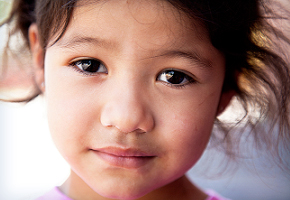
Quick Tools
Childhood Hunger: The Problem
The Problem
No child should grow up hungry in America, but 13 million children – that’s one in six – struggles with hunger. Nearly half of all people who use the Supplemental Nutrition Assistance Program (SNAP or food stamps) are kids. Hunger prevents kids from reaching their full potential and it’s an epidemic that’s threatening America’s future. 21 million U.S. kids receive a free or reduced-price school lunch, but only half of those kids also get breakfast, even though they’re eligible. And only 1 in 7 kids who get free and reduced-price school lunches also receive summer meals. Hunger has a huge effect on how a child performs at school. In fact, 9 out of 10 teachers say having a healthy breakfast is key to academic achievement.

Consider What’s At Stake
Children who struggle with hunger don’t do as well in school. Instead of coming to class ready to learn, a hungry child is focused on her empty stomach. Kids who don’t start their day with a nutritious breakfast are more likely to be sick and miss class than their peers, which prevents them from excelling academically. A hungry child is less likely to graduate from high school and go on to college, which has a negative impact on her economic future. If this happens, then twenty years from now, she’s much less likely to be able to earn enough to feed her family.






